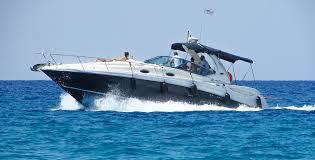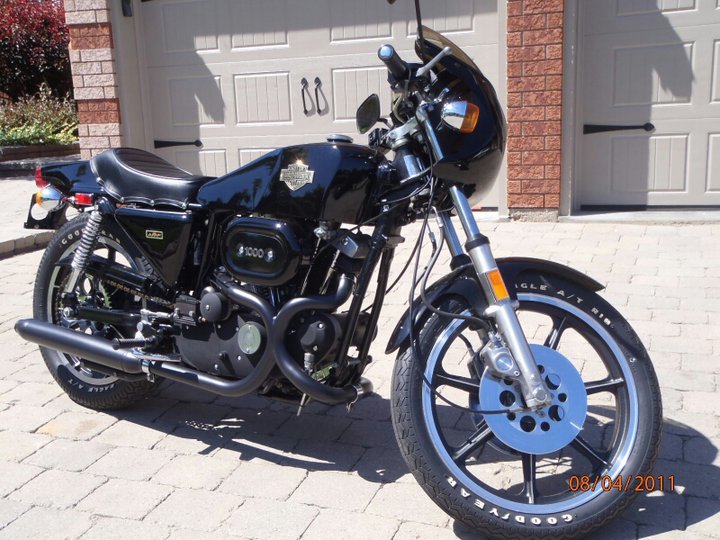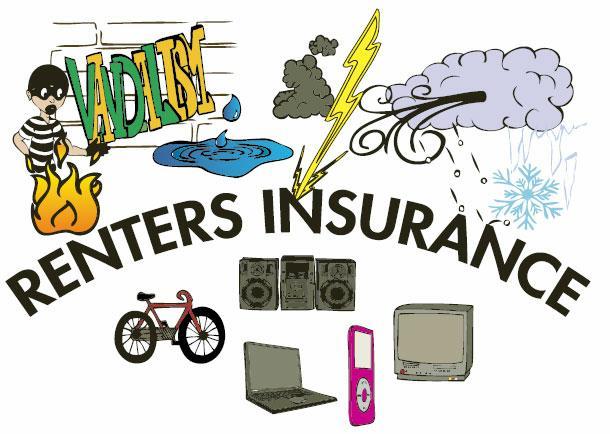|
Not all boat insurance policies are alike. There are good boat insurance policies and there are bad ones. However, most people don’t know the difference between the two. This simple 10 point checklist will help you determine if your boat insurance policy is adequate, or if you need to do some shopping around for better coverage. Boat insurance policies are set up in one of two ways: one way is setting it up by itself as a stand-alone exclusive boat insurance policy. The other way is to add it as an attachment to your homeowner’s insurance policy. You’ll see me refer to this throughout this article… 9 times out of 10, a stand-alone boat insurance policy is better than a boat insurance policy attached to homeowners insurance. Boat insurance policies are similar to snowflakes, in that no two boat insurance policies are alike. This checklist will help you know what to look for been finding the best boat insurance coverage. 1. No crazy restrictions about where it is moored or how it is used. Examples of this include:
2. Coverage for personal property. This includes items such as life vests, flotation devices, skis and your personal property that you bring on the boat with you. As you already know, the costs of these items can get really pricey. But many boat insurance companies do not offer coverage on personal property. However, a good boat insurance policy will offer coverage for personal property. 3. Agreed value coverage vs. Actual cash value coverage. There is often a big difference between these two as far as how your boat is valued. Agreed value coverage is far better to have than actual cash value coverage. But not all boat insurance policies offer agreed value coverage. 4. Liability coverage for fuel spillage and debris removal. Many boat insurance policies will only cover you for liability if you cause bodily injury or property damage. Only a good boat insurance policy will cover you if you are responsible for fuel spillage and/or debris removal as the result of an accident. 5. Uninsured motorists and medical payments coverage. While both of these are usually covered on any type of vehicle insurance policy, some boat insurance companies do not include them. Both are very important coverages to have if you were to be injured in a boating accident. Any good boat insurance company and will offer both of these coverages. 6. No crazy mileage restrictions. Many boat insurance companies only cover you a short distance radius from where your boat is garaged or moored. Be careful of this! A good boat insurance policy will cover you at least 75 miles away, with the option to increase that if you need to go farther. 7. Trailer coverage. Almost anyone who owns a boat also owns a trailer to go with it. Trailers are not cheap to replace but they are cheap to insure. It’s always a good idea to have coverage on your trailer, and a good boat insurance policy will include the option for you to add trailer coverage. 8. Coverage on accessory equipment. This includes things such as stereo systems, depth or navigation equipment, lighting etc. A good boat insurance policy will include free accessory coverage up to a certain amount (usually 2000 to 3000 dollars), with the option to purchase more coverage if you need it. 9. GAP or total loss coverage. This only applies to new boats and boats that are nearly new. But for new boats this coverage is a must-have! Some companies are offered GAP coverage, others offer Total Loss coverage. They are nearly the same thing and both are offered as a way to protect you from your boat’s depreciation. For those of you who have your boat financed, it’s a great way to defend against being upside down on a loan in the event of a total loss. 10. Roadside assistance coverage. You never know when your boat might break down and you will need some help. Roadside assistance coverage is usually great for this with the better boat insurance companies. You’ll need to take a close look at your policy because roadside assistance coverage can be very different from one policy to the next. But with most boat insurance policies, this coverage is pretty cheap and worth having. Summary: There are good boat insurance policies out there, and there are some bad ones too. But it’s hard to tell a good policy from a bad one without knowing what to look for. This 10 point checklist should go a long way in helping you know what to look for. It might take a little digging and reading what’s exactly on your boat insurance policy. But waiting for a claim to happen is a terrible time to find out that you’ve had lousy coverage all along. Get a Boat Insurance Quote with Lyles Insurance Call me for a Quote Related Blog Articles: Video: 10 Additional Coverages offered on a good Boat Insurance Policy Video: Progressive Boat Insurance Video: What you need to know before buying Boat Insurance Virginia Boat Insurance: How to make sure your policy doesn’t suck! Michigan Boat Insurance: 10 Points to check if your Boat Insurance policy is good or lousy
1 Comment
If you're looking to buy motorcycle insurance, there are some key points that you need to know. You can get very good coverage on motorcycle insurance for a very good rate as long as you know what you're doing. But if you don't know what you're doing, you're either getting stiffed on lack of coverage and/or not getting the right price. This article will help you understand what you need to know beforehand about buying motorcycle insurance. Some of these may seem very simple and obvious. But they made the list because they are often overlooked. Here is a list of seven things that you need to be aware of as far as motorcycle insurance is concerned: 1. All of the basic components that apply to auto insurance apply to motorcycle insurance as well. And the same goes for any other type of personal vehicle such as a boat, RV, golf cart, snowmobile etc. While they all have their own specialized coverage, the basic parts of the policy are all the same. There are five basic components to any vehicle policy:
To learn more about the five basic components, see my blog article The Basics of an Auto Insurance Policy: Breakdown of each coverage explained. 2. While the basic coverage for auto insurance is just the same as motorcycle insurance, the pricing is very different! There may have been times where you wanted a particular coverage on your auto insurance policy, but passed because it was too expensive….. Don’t assume that is still the case with motorcycle insurance. The way insurance is rated for autos and motorcycles are similar in many ways, but very different in others. 3. Older bikes tend to rate below the minimum that a company will charge…. If so, take advantage of this! Every motorcycle insurance company has an absolute minimum price that they will insure a motorcycle for (usually in the range of $75-100 per year). Many bikes tend to rate below this minimum amount….. When that happens, you can in many cases take better or higher coverage at no additional cost. Many people are not aware of this. 4. Off-season coverage. In the cold weather months, many bikes get stored and put away. Some people decide to keep the same coverage on the bike all year around. Others cancel the policy while the bike is not being used…. What I suggest is going middle of the road here…. During the off-season when you’re not using your bike, you can lower coverage down, which will save you money…. Simply drop collision coverage (you’ll want to keep comprehensive coverage because it protects your bike from theft, fire, vandalism, etc.). Drop you medical coverage (if your state allows it, most do), drop uninsured motorist coverage (again, if your state allows it, most do), and drop your liability coverage down to the state minimum level…. Remember that when you ride again when the weather breaks, adding coverage back to where you had it only takes a two minute phone call to your agent. 5. Motorcycle License or Endorsement. If you have a motorcycle license, or a motorcycle endorsement on your driver’s license, this earns you a discount with most motorcycle insurance companies. However, I’ve seen a lot of people who are not aware of this, and their agent/company is not applying the discount. So make sure you inquire about it. 6. Discounts for safety features. Many motorcycles are equipped with safety features that a lot of companies give discounts for. These include things such as anti-lock brakes, LoJack or other type of anti-theft device, or other types of safety device. Although this seems simple enough, you would be surprised at how many bikes qualify for this discount but don’t get it because the agent or company is not aware of it. 7. Shop around! This is one thing that motorcycle and auto insurance both have in common. There is no better way to save yourself money than by getting quotes from multiple motorcycle insurance companies. The more companies that you quote with, the better the chance that you are paying the lowest possible rate. The most efficient way to do this is to get a quote with an independent agent who sells motorcycle insurance through more than one company. They will be happy to do the shopping around for you. Summary: While some of these keys might seem overly simple, you would be amazed at how many people don’t take advantage of simple things that could be saving them a lot of money. A simple call to your agent can address many of these. So don’t leave money on the table! Get a Motorcycle Insurance Quote with Lyles Insurance Call me for a Quote Related Blog Articles: Video: Progressive Motorcycle Insurance Video: Basics of a Motorcycle Insurance Policy Buying Online Motorcycle Insurance in Portsmouth Ohio: Are you getting ripped off? Trying to make sense of Michigan’s Motorcycle Insurance Laws Where can I find Insurance on a Polaris RZR that is licensed for road use? Regardless of whether or not you are required by your landlord to carry renters insurance, it is always a good policy to have. Renters insurance provides you with very valuable coverage at an affordable price. If you are new to renters insurance, this article is intended to help you understand the basics of what you need to know as far as coverage is concerned. You will learn the basics of coverage plus you will also learn about additional optional coverage that you may be very interested in. But first let's start with the basics the main features of a renters insurance policy include: Basic Coverages
Additional and optional coverages
There are several additional coverages offered that go beyond what a general renters insurance policy covers. Some of you may be very interested in selecting these additional coverages. They include:
Summary: Renters insurance offers valuable coverage for an affordable price. Yet less than half of renters take advantage of the coverage. Ask yourself, what would you do if a disaster suddenly displaced you from your apartment? If you haven’t considered renters insurance before, you should at least consider it. Get an Ohio Renters Insurance Quote with Lyles Insurance Call me for a Quote Related Blog Articles: Why Ohio Renters Insurance is a must have Before you can select the level of auto insurance coverage that you need, it’s very important that you understand the basic components of an auto insurance policy. The bad news is that only a fraction of the population understand these basics. The good news is that there is not that much to learn. There are only five components to a basic auto insurance policy. Once you learn those, you will know the bulk of what you need to know in order to select the right coverage for yourself and your family.
1. Liability coverage. While some parts of an auto insurance policy are optional, liability coverage is required on any auto insurance policy. Liability coverage applies when you cause an accident resulting in injuries and/or property damage. Example: let's say that you run a red light and crash into somebody. Liability coverage pays for damages to the person you hit whether it be medical injuries or property damage. Liability insurance pays the other guy up to the limit you're carrying on your policy. Caution: Many drivers only select the minimal amount of liability coverage that their state requires. This level of coverage is usually only adequate if you cause a minor accident. If you cause a major accident, it’s usually far too inadquate to cover all the damages. You could be left on the hook for the rest…. So it’s very important to have higher levels of liability coverage than just the minimum your state requires. 2. Uninsured/Under-insured Motorist coverage. Uninsured Motorist (UM) coverage pays you if someone hit you and it's their fault, but they don't carry liability coverage like they're supposed to. Under-Insured Motorist (UIM) coverage works in the same way except that it applies when the at fault driver that hit you does have liability coverage, but that does not have high enough coverage to pay for all of your injuries or property damage. Both of these coverages are very important to have. Also remember that you're only allowed to carry as much level of coverage as what you're carrying in liability coverage. So if you go with skimpy state minimum liability coverage you will be limited to that amount on UM and UIM. 3. Medical payments coverage. The actual name of this coverage varies from state to state. Some states call it Medical Payments coverage, some states call it Personal Injury Protection (PIP), some call it Medical Benefits coverage. Regardless of what it's called in your state, it pretty much works the same way. Medical payments coverage applies to you and any of your passengers who are injured in an accident, regardless of who is at fault. In Ohio, Indiana, Virginia and West Virginia medical coverage is optional. In Pennsylvania and Michigan it is required. Most states and auto insurance companies only offer low levels of this coverage except for Michigan which requires unlimited medical coverage. 4. Comprehensive coverage. #4 Comprehensive coverage and #5 Collision coverage in a sense sort of run together (I’ll explain more about that later). Comprehensive covers the vehicles you have insured for damages that result in anything other than an accident. Some states refer to comprehensive coverage as “Other than Collision (OTC)” coverage, but it means the same thing. Examples of Comprehensive coverage include: Theft Fire Vandalism Damage from weather (hail, fallen tree, etc.) Hitting an animal (deer, moose, cattle or any other animal large enough to cause damage to your vehicle) 5. Collision coverage. Collision coverage applies to damage done to your vehicle as a result of an accident, regardless of who is at fault. If you are deemed as at fault for an accident, collision coverage is what applies to repair/replace your vehicle. If the other guy is deemed as the at fault driver, their liability coverage usually pays for it… But if they don’t have auto insurance (or not enough to pay for your vehicle’s damage), collision coverage will kick in. Important things to know about Comprehensive and Collision coverage:
Understanding Deductibles
Buying a brand new vehicle (or nearly brand new) If you are buying a brand new car or a car nearly brand new, be sure to take either “GAP” or “Total Loss” coverage! ….. I’m sure you all have heard that once you drive a car off of the dealership lot, that it automatically depreciates….. That is true! This “GAP” or “Total Loss” coverage is a must have because it protects you from being upside-down on a car loan (owing more on your car than what it’s worth). If your vehicle is new enough to qualify, take it! It costs very little extra and is a lifesaver if you were to total a brand new or nearly new car. Summary: I’ve tried to keep this short and simple, so you would know what you need to know about buying auto insurance. Not everything can be covered in one article. But you now know what you need to know in order to get an auto insurance quote…. If you have any questions that I haven’t answered, feel free to give me a call. I will be happy to explain it to you….. If you would like me to run you an auto insurance quote, click on the link below…. And as always, I handle all quotes personally and privately. Get an Auto Insurance Quote with Lyles Insurance Call me for a Quote Related Blog Articles: Video: Basics of an Auto Insurance Policy Video: 8 Common Auto Insurance Advertising Pitches and What they don't tell you Video: Do's and Dont's of buying Auto Insurance Online Help! A Vin Number mismatch is causing a snag in buying Auto Insurance 10 Keys to Buying Auto Insurance in the Portsmouth Ohio area with a bad driving record Right Way and Wrong Way to Cancel Auto Insurance Policies when Switching Companies |
Author
Dan Lyles is an Independent Insurance Agent serving Ohio, Indiana, Michigan, Pennsylvania, Virginia and West Virginia.. Archives
March 2021
Categories
All
|





 RSS Feed
RSS Feed